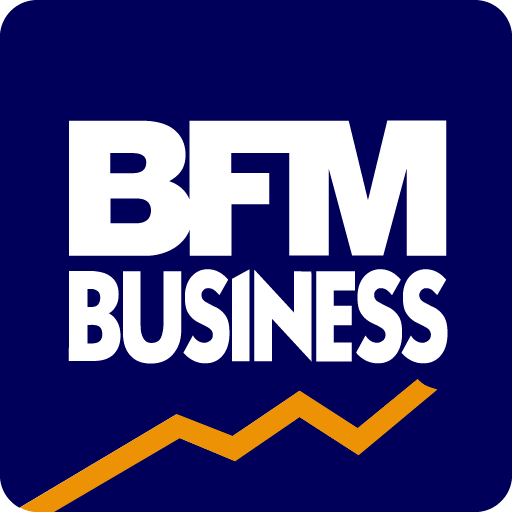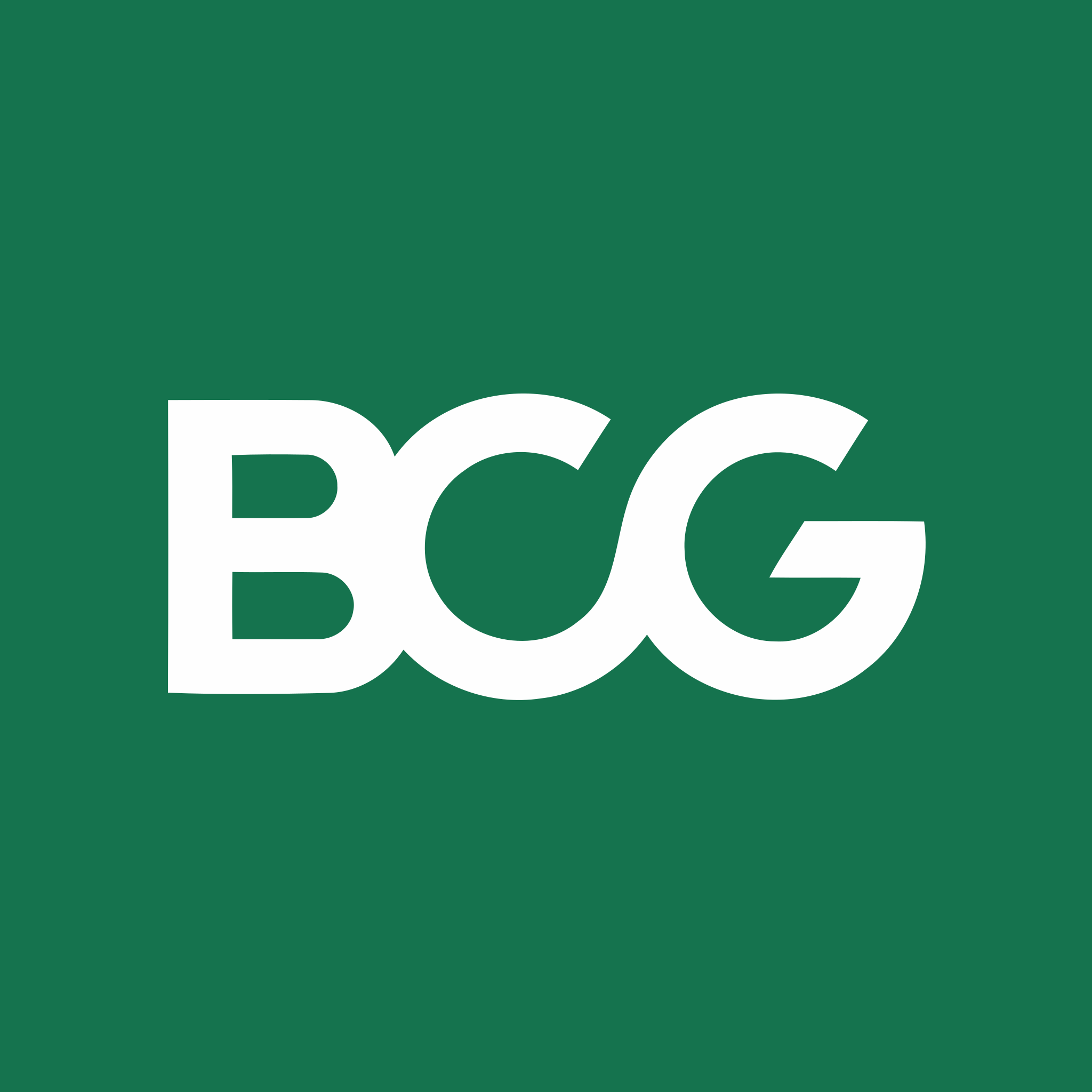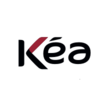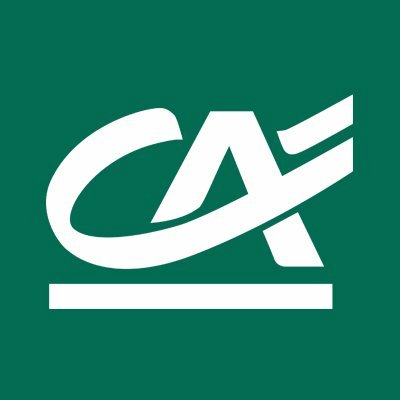Summary of our market study
In France, the e-learning market is estimated at over 1.3 billion euros.
The global e-learning market could reach $1,000 billion by 2027.
A notable trend is the move towards varied forms of e-learning, classified as MOOCs, SPOCs and COOCs, each serving different segments of learners, from the general public to corporate employees.
The French e-learning market represents around 2% of the global market. It is experiencing annual growth of around 15%.
The trend towards blended learning is predominant, with 74% of companies favoring this format in 2020. The majority of companies (58%) anticipate an increase in blended learning.
The flexibility of e-learning is a strong incentive for students and professionals alike.
Companies value e-learning for its responsiveness to business needs and its potential to reduce training costs.
The production of e-learning content is increasingly carried out by educational establishments and companies themselves. Around 60% of digital content is produced in-house.
The e-learning market is full of players.
E-learning players.
- Coursera is a leading platform that collaborates with top universities
- GIP FUN MOOC (France Université Numérique) embodies France's commitment to the digital learning space.
- ByJu's, particularly popular in India, illustrates the growth of the Asian market.
- OpenClassrooms is a French platform
- Coorpacademy focuses on corporate needs
- Digischool is another versatile player targeting the secondary education market.
- Crossknowledge is a pioneer in e-learning for corporate employees and civil servants worldwide.
to understand this market
Detailed content of our market study
 Inforamtion
Inforamtion
- Number of pages : 35 pages
- Format : Digital and PDF versions
- Last update :
 Summary and extracts
Summary and extracts
1 Market overview
1.1 Definition and scope of study
E-learning, or digital learning, is a learning method based on online teaching resources and content. E-learning is used in both personal and professional training contexts. There are three main categories of e-learning:
- MOOCs (Massive Online Open Courses) are open-access courses, generally free of charge, at the end of which the public can obtain certification.
- SPOCs (Small Private Online Courses) are fee-based MOOCs whose access is restricted to specific users, such as university students. They can also lead to certification.
- COOCs (Corporate Open Online Courses) are used by companies to train their employees.
E-learning is linked to the fields of professional training and education. It democratizes access to training, as it enables flexible teaching and access to all users with an Internet connection, regardless of their location. E-learning can be combined with face-to-face courses, making up what is known as " hybrid " or " blended-learning " training [Eduscol]
worldwide, e-learning is on the rise, with growth forecast at 13.4% per year from 2023 to 2027. While North America remains the most advanced region, growth is expected to be very rapid in Africa, Asia and South America. In particular, India is the world's second-largest e-learning market, behind the United States.
The e-learning market is thriving with the development of teleworking. However, 100% online is not yet the order of the day, as hybrid training courses, combining face-to-face and distance learning, are the most popular with consumers. New innovations are likely to appear on the market in the next few years, given the high level of investment in this area.
The main e-learning players are Coursera, GIP FUN MOOC, ByJu's, OpenClassrooms, Coorpacademy and Digischool.
1.2 Sustained global market growth
The global e-learning market represents $***.** billion in **** and is expected to reach $***.** billion by ****, with a compound annual growth rate (***) of *.*% over the forecast period.
E-learning sales World, *****-*****, in billions of USD Source: ****
united States
The United States is the world leader in terms of e-learning integrated into education. Many American students take hybrid or fully distance learning courses, and this figure is rising all the time. Most universities offer fully online courses, although it is the largest universities that offer the most online courses.
By ****, **% of the global market will be concentrated in the USA and Europe. **% of companies use e-learning. The most popular platform is Udemy, with ***,*** courses and ** million users.
Developing regions
In the other continents, Africa, Asia and South America, e-learning is developing rapidly, as more and more localities are equipped with Internet access and the young population is inclined to learn online.
The African e-learning market is booming, as it provides more affordable access to vocational training and democratizes education (***).
In Asia, the e-learning market is expected to grow by **.*% between **** and ****, making it a veritable Eldorado. [***] * countries lead the market (***):
In India, Byju's is the world's most valuable Edtech company in ****, at over $** billion. ...
1.3 The French market
In France, the e-learning market is estimated to be worth *.* billion euros by ****. [***]
Type of training offered in companies France, ****-****, in % Source: ****
The transition to digital learning is gradually gaining ground on traditional training. It seems that companies are increasingly moving towards blended training, which reduces costs and increases efficiency by adopting a more flexible approach that suits learners.
Blended training plans (***) now account for over **% of total training delivered in companies.
1.4 The Covid-19 pandemic: accelerating the spread of e-learning
The spread of e-learning
With millions of students around the world unable to attend classes, e-learning has become a necessary tool for education. Many schools and universities have migrated to digital teaching overnight, generating strong demand for this service.
The assets that have made e-learning a mainstay of education during the pandemic and most certainly post-pandemic are its flexibility, accessibility, affordability and the wide range of specializations available. using a simple computer or cell phone, students can now access any virtual classroom. The low price is also a major advantage, since it is estimated that access to an online course costs around ten times less than its face-to-face equivalent. The growth of e-learning also favors the development of a tailor-made student pathway in which students are free to build their own curriculum.
All in all, the Covid-** pandemic and the resulting containment measures are said to have been responsible for a **.*% increase in the global e-learning market over ****. [***]
in the future, the education sector is likely to incorporate certain reflexes from the pandemic in a sustainable way. Indeed, it is likely that teaching will develop in hybrid forms, with some traditional classroom teaching and some distance learning. Research into the results ...
2 Demand analysis
2.1 Demand for e-learning
Benefits for students/employees/executives
The advantage of these new learning methods is that you can take an academic or professional training course at the same time as another professional activity or studies. Hybrid or fully online learning gives learners flexibility, adapting to their needs without the need to travel.
What's more, distance learning courses are generally less expensive than face-to-face courses. There are a number of reasons for enrolling in partial or total e-learning courses:
The desire to accelerate one's career by obtaining more certifications; Reorientation; Professional necessity; Curiosity and personal interest.
Learner motivation depends on a number of factors, which can trigger the learning process, but also encourage its intensity.
The advantages of digital learning are numerous for companies, educational establishments and public authorities. The main advantages cited by **% of the panel are improved pedagogical effectiveness of training courses, and better response to requests from sponsors (***). E-learning thus offers the clear advantage of flexibility and relevance, at a reduced cost to customers.
Why switch to digital learning? France, ****, in Source: ****
Universities and higher education establishments are increasingly offering partially online courses to facilitate logistics and cut costs, either by purchasing access licenses to platforms for their students, or by ...
2.2 Demand trends
Although face-to-face teaching regained ground this year as the predominant mode of instruction, multimodal and ***% asynchronous distance formats (***) remain the priorities for optimizing training services. Overall, **% of respondents, compared to **% the previous year, express their intention to turn more to digital training in ****.
For ****, how will you develop your training offer? France, in ****, in Source: ****
Video learning
The video-learning modality recorded the strongest growth this year in the choices made by training departments. Having joined the top four last year with **% of the vote, it is now competing with the more traditional scripted e-learning modality, with over **% use in ****. also noteworthy is the resurgence of face-to-face training, which has reached its highest level since ****. This graph clearly illustrates the majority composition of training devices: face-to-face, virtual classrooms, e-learning modules and, increasingly, video learning. Activities such as serious games, virtual reality and social learning remain well behind. Technical and pedagogical constraints, as well as the high cost of these methods, may explain why they are less widely used.
The use of artificial intelligence
Poll: Do you use AI to design your training courses (***)? France, in ****, in Source : ISTF AI use got off to a flying start, with **% using it in the first ...
2.3 Demand driven mainly by companies and universities
E-learning is on the rise in France. at present, it is estimated that only **% of corporate training courses are delivered solely face-to-face.
However, the penetration of e-learning is not uniform. Indeed, educational institutes and large companies have a clear lead over the public sector.
The graph below shows that, while large French companies have adopted blended learning for **% of their training courses (***), this is the case for only **% of public-sector training courses. This gap should be gradually closed over the next few years.
Training provided using e-learning or blended learning France, ****, as % of total Source: ****
There's no doubt that the vast majority of companies have taken on board the principle of internalizing content production, which explains why this practice is growing year on year. This year, it reached the **% mark, with a notable increase in the proportion produced by the training department itself. The survey also highlights the fact that **** will be a year in which training professionals will be increasingly skilled in content creation, including mastery of software and production methods.
Origin of digital learning content in companies France, in ****, as a % of total Source: ****
2.4 Rising training expenditure and the explosion of teleworking drive e-learning growth
An increase in training expenditure
Although they fluctuate from year to year, companies' training expenditure tends to increase, rising by **% between **** and ****, and by **% between **** and ****. Indeed, this spending on employment has increased as a result of the measures taken by the government to deal with the health crisis. More generally, there has been an increase in spending since ****, due in particular to the Personal Training Account, which came into force on January *, ****, creating a mechanism for financing continuing training actions in France.
Expenditure on continuing training France, ****-****, index base *** in **** Source: ****
However, this indicator is limited in explaining the boom in e-learning, since it mostly replaces pre-existing face-to-face training. Spending on training has changed little, but e-learning is gaining ground.
An explosion in teleworking
Telecommuting strongly favors the use of online rather than face-to-face training. The boom in e-learning is therefore largely linked to its development. Telecommuting has been on the rise for several years now, with the number of telecommuters expected to more than quadruple between **** and ****.
The Covid-** pandemic created an overnight upheaval in the market, with millions of working people switching to telecommuting. While many of them are expected to return to work in their company's ...
2.5 MOOC consumer profile
Audience breakdown by age France, ****, %, %, %, %, %, %, %, %, %, %, %, % Source: ****
Analysis of the data shows that the audience in the market studied is mainly made up of people aged **-** (***). These age groups are over-represented in relation to their proportions in the French population. On the other hand, the over-** age groups are clearly under-represented, with only *.**% for the **-** age group, *.**% for the **-** age group and *.**% for the **+ age group, whereas these age groups represent **.**%, **.**% and **.**% of the French population respectively. Audience breakdown by gender France, ****, % of total audience Semrusg Audience analysis for the market studied shows a predominance of men (***). Audience breakdown by gender and age France, ****, % (***) Source : Semrush Audience analysis for the market studied shows a distinct overall trend by gender and age group. Women predominate in the **-** age bracket with **.*%, while men are clearly more present in all other age brackets, notably **-** with **.*% and **-** with **.**%. The **-** age group shows a more balanced gender distribution, although men remain in the majority at **.**%. This trend continues in the older age brackets, with a slight male predominance of **.**% in the **-** age bracket and **.**% in the **+ age bracket. Audience breakdown by income level France, ****, % of total audience Semrush Analysis ...
3 Market structure
3.1 Market players
Schools/universities
The first institutions to offer training courses entirely online were American universities, notably via MOOCs (***). These courses can be accessed directly on the school/university's website, or privately by students in the case of customized content.
In France, business schools such as HEC and ESSEC, engineering schools such as Centrale-Supélec and École Polytechnique, and universities such as Sorbonne and Université de Nantes, offer online courses leading to a certificate of completion.
Training platforms
These platforms bring together the various training courses offered by schools, public institutes or private companies, and provide a framework for them. They also enable users to create their own online training courses, by providing tools for creating their own online training courses. With this in mind, training platforms can be used to create the customized training courses requested by certain players (***).
Private companies / Institutional bodies
In the same way as schools and universities, this category of players offers educational content for its employees or free access to anyone. They are available via training platforms or directly on their own websites.
Mobile applications
Applications include serious games, language-learning applications and, more simply, any informative content available to the public. The number of players of this ...
3.2 Content production
A major trend in the e-learning market is the internalization of content production, which has gradually taken hold among training organizations.
External productionexternal production: training organizations (***) create courses that they sell to companies, universities or individual users. In-house productionin-house production: companies or universities purchase or develop software to create customized content. They can also "order" a customized course from specialized organizations. Mixed production: companies or universities purchase content that is then customized.
The tools needed to create content have been democratized and are now inexpensive to use. The following graph shows that in ****, **% of educational content was produced in-house, an increase of **% on the previous year .
Only **% of trainers used external off-the-shelf content. Both in-house and outsourced training can be tailored to the company's needs, with content that is entirely adapted to the company's needs.
Origin of digital content France, ****, as % of total Source: ****
In the field of education, in-house content development is also on the rise. A growing number of universities and higher education establishments offer online training courses, or include the use of digital platforms dedicated to learning in their classroom courses. This is the case, for example, of ESCP Business School, a prestigious French business school, which is ...
3.3 Online training distribution and materials used
B*C distributionb*C distribution : companies providing e-learning training to their customers give them access to the dedicated platforms, applications or interfaces, generally by means of personalized logins and passwords.
Business-to-business: companies specialized in e-learning training provide their corporate customers with access to their e-learning platforms, in the form of fixed-term licenses, or deliver the content ordered. Content must be compatible with the different channels used by corporate customers, and must be intuitive, with a user guide provided.
The use of social networks and close links with industry players are necessary to attract potential learners. Given the diversity of the competition, companies offering e-learning courses need to make themselves known.
According to TalentSoft's survey, many learners use their personal devices rather than their work devices for mobile or tablet training. The ability to split learning phases blurs the boundary between work and personal time.
Share of computer use for training courses France, ****, in % Source: ****
Share of mobile/tablet use for training France, ****, in % Source: ****
According to respondents, **% use their personal laptop to follow online training. For phones and tablets, **% make this choice.
3.4 Investors' attraction to e-learning
With the e-learning and MOOC market booming, it represents fertile ground for many startups. Indeed, global investors are increasingly interested in this sector, and are devoting large sums of money to its development.
evolution of fundraising in start-ups France, ****-****, in billions and millions of euros Source: ****
Since ****, investment in French start-ups has been growing steadily, reaching **.* billion euros in ****. In ****, investment in start-ups belonging to the Edtech sector was *** million euros, and its weighting on investment in French start-ups was *.*%. However, due to the health crisis, investment in Edtech companies has slowed down, as shown in the graph above. By ****, the *** EdTech start-ups had raised a total of €*** million in funds, representing a very significant recovery. This puts France in second place in Europe in terms of funds raised (***), and in first place in terms of company volume[***].
Openclassroom, focus on one of France's leading Edtech companies
The company offers online courses with a certified diploma when all courses have been successfully completed. Between December **** and December ****, openclassroom greatly expanded its panel of BtoB customers, claiming *,*** corporate customers in December **** compared with *** in December ****. At the same time, it also provides a tutoring service for students and adults with self-access ...
3.5 The Demos example and LMS challenges
A leader in the LMS (***) market for several years, Demos had been facing financial difficulties for several years and implemented a very precise transformation strategy to relaunch the company and adapt it to the current market. This strategy consisted of two main measures:
Transformation of the training catalog and a more "tailor-made" offering
Back-office teams were reassigned to sales functions, while the organization's training catalog was completely overhauled. Seriously streamlined and updated, the catalog had been reduced from *,*** courses to just ***, better aligned with the needs of companies and combined with the latest technologies.these were better aligned with companies' needs, and combined hard skills with soft skills. At the same time, Demos had developed a training consultancy business for companies, with the aim of providing a "tailor-made" offering that met the immediate needs of the group's customers. This approach marked a minor cultural revolution for a service provider that had long favored off-the-shelf training over customized solutions. As an illustration of this new direction, by **** Demos planned to increase the creation of "expert" HR content for sectors such as banking, insurance and the medical-social sector.
Development of the ETI and SME customer portfolio
However, the company's growth was also linked ...
4 Offer analysis
4.1 Training courses
According to Coursera, the leading platform for open-access online training, the most popular online courses in the world in **** are :
Foundations: Data, Data everywhere (***), *.* million people took this course Foundations of project management (***), *.* million people have taken this course The Science of Well being (***) Foundations of User experience Design (***) Technical Support Fundamentals (***) English For Career Development (***), * million people have taken this course Ask Questions to make Data-Driven Decisions (***) Programming for everybody (***) Learning how to learn (***) Financial Markets (***)
We can thus observe that course content often comes from prestigious American universities, and that courses present a wide diversity of content, with subjects ranging from machine learning to psychology.
In addition, the disciplines most frequently offered by this generalist platform are :
Computer science: learning different programming languages, or more generally the basics of algorithmics (***) Data Science: Data Science and Machine Learning, Database Management (***) Personal development: training courses with a social, psychological or linguistic focus (***) Business: Finance, Economics, Marketing, Excel courses...
Finally, you'll also find online training courses in Health, Arts and Humanities, History, Mathematics and Logic, and many others.
In France
Les Echos lists the most popular online courses in France in ****:
Machine learning (***) Becoming an entrepreneur of change (***) Learning how to learn ...
4.2 Price ranges for online training in 2024
The price of e-learning courses can vary enormously, from a free video to a tailor-made course commissioned by a major corporation.
In the educational sector, when schools and colleges integrate e-learning activities into their curricula, there is no additional cost to parents.
Universities
When it comes to e-learning offered by universities and higher education establishments, the price of training courses varies according to the modality, as well as the reputation of the institution.s, such as the reputation of the institution, the entry level required to follow the course, or the subjects taught. Some courses last just a few dozen hours, at the end of which a certificate is awarded. Others are longer, and award diplomas similar to those obtained in face-to-face courses.
The FUN MOOC platform, for example, offers a CNAM certificate entitled "Du Manager au Leader ou comment devenir agile et collaboratif", which costs €** for * to * hours of work over * weeks. Centrale Lille's Project Management certificate, lasting * weeks with a few hours work per week, costs between €*** and €***.
Business schools, on the other hand, offer more expensive courses, such as HEC's online-only Strategy course, which will cost €*,*** in **** for an estimated course duration of around * months.
Professional environment
First ...
4.3 The apogee of mixed training
Blended learning is a hybrid program combining face-to-face and distance learning. This program is particularly popular with companies and educational establishments, as it combines the pedagogical advantages of face-to-face training with the flexibility of distance learning.
By ****, **% of companies implementing training programs will be using blended learning. This model distances entirely face-to-face (***).
Training methods preferred by companies France, ****, in Source: ****
The trend towards blended learning is set to continue and even accelerate in the years ahead. Indeed, **% of companies say they want to move towards more "blended learning". This is by far the preferred solution, ahead of increasing distance learning (***).
training trends if the health crisis comes to an end France, ****, in Source: ****
4.4 New trends in e-learning
E-learning organizations have new technologies at their disposal to enhance the appeal of their educational offerings. Several tools are available to future trainees to make learning easy and enjoyable. Here are the e-learning trends for ****:
The integration of virtual and augmented reality
Virtual reality (***) technologies are transforming e-learning by creating immersive, interactive experiences. By ****, a more widespread adoption of these technologies in e-learning programs is anticipated. From VR simulation to practical applications of AR in courses, these tools are redefining the way learners develop new skills.
Adaptive learning thanks to artificial intelligence
Artificial intelligence (***) continues to play a central role in personalizing e-learning. By ****, training platforms will be making greater use of AI to tailor content to each learner's specific needs. Adaptive learning systems will offer tailor-made recommendations, targeted exercises and adapted assessments, increasing the effectiveness of learning.
This trend is also reflected in the creation of courses and training. For example, the Apolearn platform has developed an Apolearn AI offering that enables course materials, exercises and summaries to be generated rapidly using artificial intelligence. It also offers automatic text transcription of course videos and a wizard to help with pre-correction of renderings.
The growing popularity of micro-learning and nano-learning
With ...
5 Regulations
5.1 Regulatory change and market influence
The March **** law
Distance vocational training, and therefore e-learning, has been included in the Labor Code since March *, ****(***).
A certificate must be issued by the training organization on completion of the program. Most e-learning courses lead to certification, while others lead to a diploma.
E-learning is subject to training organization regulations. Both e-learning course content and platforms are subject to intellectual property.
The law of September ****
The law of September **** creates the personal training account (***). The CPF records the following information:
Rights acquired by the employee throughout his or her working life and until retirement Training courses from which the employee can personally benefit
Training courses covered by the CPF must meet one of the following criteria:
Acquisition of a qualification (***) Acquisition of a knowledge and skills base Support for validation of acquired experience (***) Skills assessment Setting up or taking over a business Acquiring the skills needed to carry out volunteer or civic service missions
The CPF is topped up at the beginning of the year following the year worked, to the tune of €*** per year worked, up to a maximum of €*,***.
Finally, the employer is only required to contribute to the CPF in the following cases:
An agreement so provides ...
6 Positioning the players
6.1 Segmentation
- Coursera
- GIP FUN MOOC
- Fédération Universitaire de l’Enseignement à Distance (FIED)
- ENACO
- Demos
- Docendi
- Dale Carnegie
- Callimedia
- KOAN Partners
- Edu-Performance
- Netopen
- CSP (Lebfevre Sarrut Groupe)
- Cegos
- Krauthammer
- Comundi
- OpenClassrooms
- COORPACADEMY
- Digischool
- Edflex
- Opensesame
- Crossknowledge (Wiley Group)
- GO 1
- 360 Learning
- Sator
- Cours Legendre (Alma learning group)
- Alma Learning Group
All our studies are available online in PDF format
Take a look at an example of our research on another market!
 Choosing this study means :
Choosing this study means :
Access to more than 35 hours of work
Our studies are the result of over 35 hours of research and analysis. Using our studies allows you to devote more time and added value to your projects.
Benefit from 6 years' experience and over 1,500 industry reports already produced
Our expertise enables us to produce comprehensive studies in all sectors, including niche and emerging markets.
Our know-how and methodology enable us to produce reports that offer unique value for money.
Access to several thousand articles and paid-for data
Businesscoot has access to all the paid economic press as well as exclusive databases to carry out its market research (over 30,000 articles and private sources).
To enhance our research, our analysts also use web indicators (semrush, trends, etc.) to identify market trends and company strategies. (Consult our paying sources)
Guaranteed support after your purchase
A team dedicated to after-sales service, to guarantee you a high level of satisfaction. +44 238 097 0676
A digital format designed for our users
Not only do you have access to a PDF, but also to a digital version designed for our customers. This version gives you access to sources, data in Excel format and graphics. The content of the study can therefore be easily retrieved and adapted for your specific needs.
 Our offers :
Our offers :
the e-learning and MOOCs market | France
- What are the figures on the size and growth of the market?
- What is driving the growth of the market and its evolution?
- What is the positioning of companies in the value chain?
- Data from several dozen databases
Pack 5 études (-25%) France
- 5 études au prix de 74 €HT par étude à choisir parmi nos 1200 titres sur le catalogue
- Conservez -25% sur les études supplémentaires achetées
- Choisissez le remboursement des crédits non consommés au terme des 12 mois (durée du pack)
Consultez notre catalogue d’études sectorielles


















